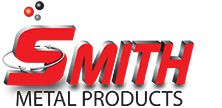MIM Costs
Competitive Forces
A wide variety of forming routes are available for metals. Thus, competing technologies greatly influence the viability of MIM. Users say that the decision to use MIM over competing technologies usually starts with cost, but includes issues of shape capabilities, productivity, surface finish, and precision. The cost advantage for MIM, versus other forming techniques, increases when it eliminates machining, grinding, or other finishing steps, especially for small components. For large, simple shapes, MIM proves unattractive.
A Comparison of MIM with Other Technologies
| Attribute | MIM | Powder Metallurgy | Casting | Machining |
| Density of Theoretical | 98% | 85% | 95 to 99% | 100% |
| Relative Strength | 100% | 50% | 98% | 100% |
| Magnetic Response | 100% | 70% | 95% | 98% |
| Surface Finish | 0.8µm / 32 RMS | 2µm | 3µm | 0.2 to 2µm |
| Wall Thickness | 7.5 to 0.1mm | 2mm | 5mm | 2mm |
| Complexity | high | Low | Medium | High |
| Design Flexibility | High | Medium | Medium | Low |
| Production Rate | Med./High Vol. | High Volume | Low Volume | Low Volume |
| Material Range | High | Medium | Medium | Medium |
| Mass Range | 0.003g to 1kg | 0.1g to 10kg | 1g up | 0.1g up |
Each technology is best suited to a particular combination of materials, tolerances, sizes, shapes, and properties. For example, casting techniques excel in shape complexity, but lack in surface finish and dimensional precision. At high production quantities, machining techniques suffer from material waste and production costs. Cost is usually the critical parameter in selecting a net- shaping technology.
